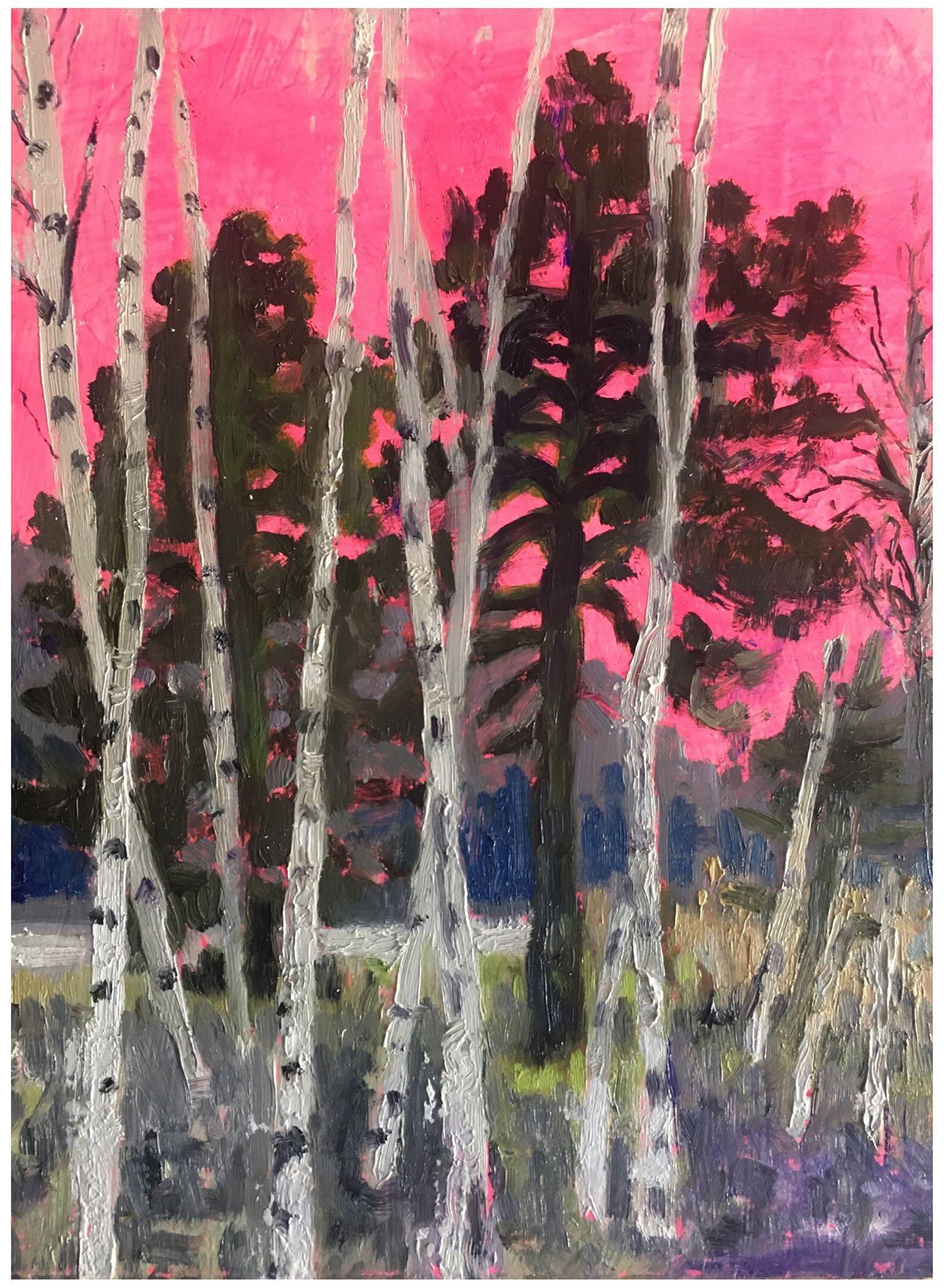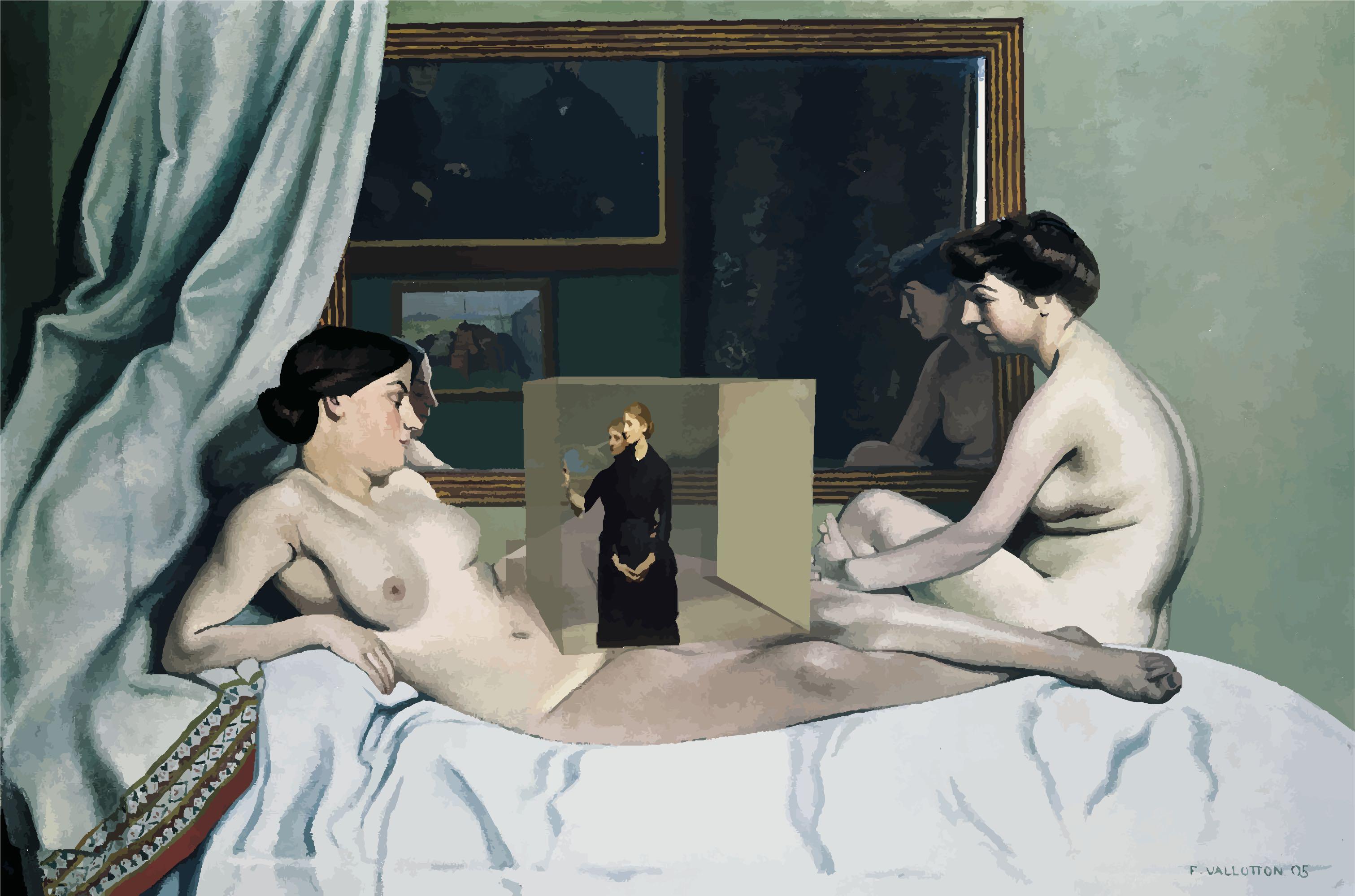
11 minute read
Nikita Sacha
Alluring Portraits of Femininity
Nikita Sacha Ikaw, 2017 Oil on canvas 25.4 x 25.4 cm
Nikita Sacha
San Isidro, PH www.nikitasacha.com
“I am interested in relationships and their emotional dynamics—how we subject each other to a kind of destruction. Often drawing from cultural and personal mythologies, my work touches on a certain melancholia and the quiet violence of being. My current ongoing series, “AngMahabangGabiNgIyongLiwanag” (The Long Night of Your Light), focuses on abstracted portraits that explore personal relationships conducted over long distances. Inspired by the need to communicate with my family by video call while studying in a different country when I was pursuing my MFA, I interpret images of video calls during moments of failing internet connection. I use this as a visual for disconnection and separation, both emotional and physical. "
Nikita Sacha Ikaw, 2017 Oil on canvas 25.4 x 25.4 cm

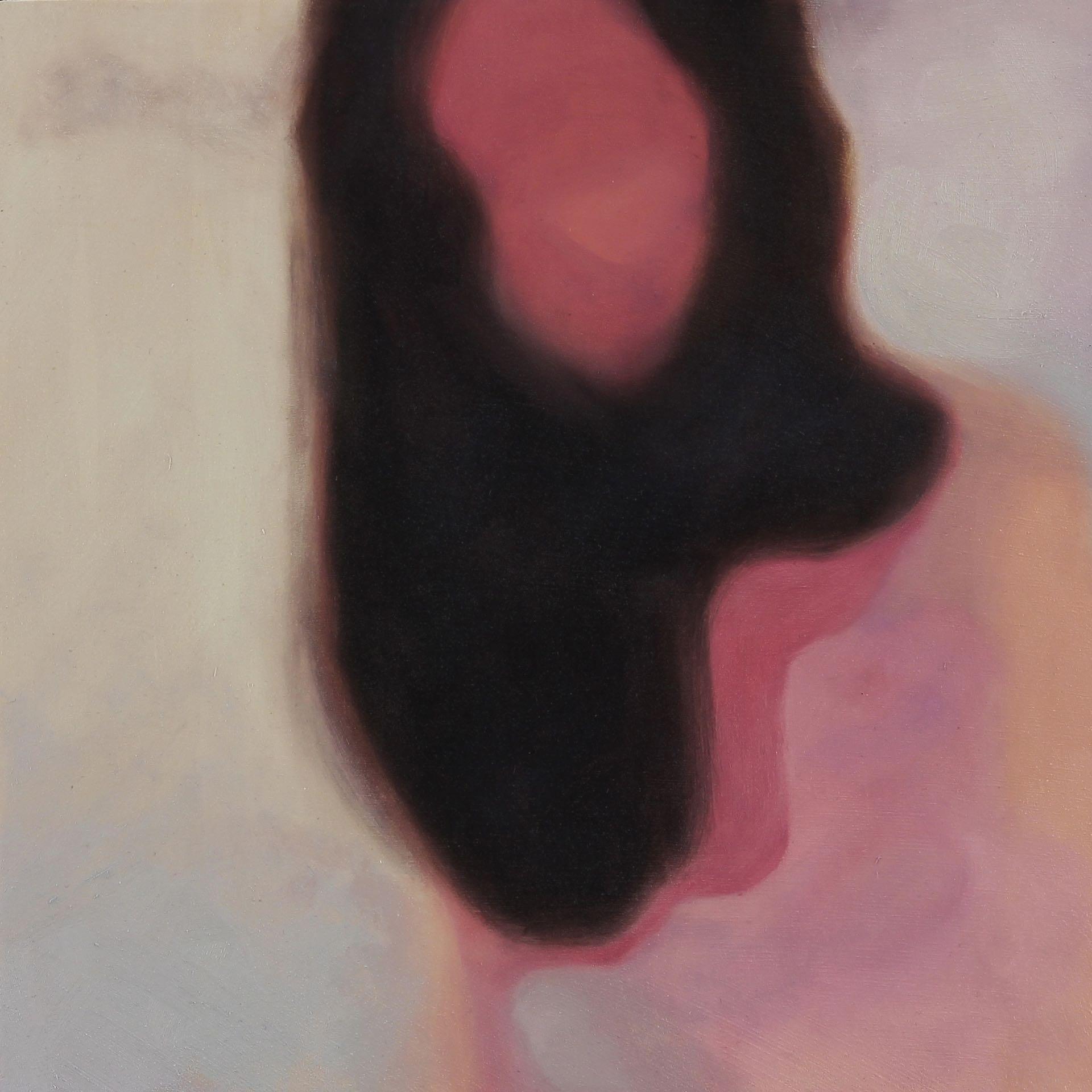
Nikita Sacha Ako, 2017 Oil on canvas 25.4 x 25.4 cm
Nikita Sacha is a multi-disciplinary artist whose body of work spans installation, photography, sculpture, and painting in different media. She earned a BFA from Miriam College, Philippines in 2008, and an MFA in painting from the Academy of Art in San Francisco, CA, in 2017.
She has been exhibiting for over twenty years and has had several solo shows in her native Philippines, the first of which was in 2009. She has also participated in multiple juried and invitational group exhibitions around the US, the UK, and Europe. Two of her pieces were displayed in the curatorial venture “On Walking Away” in Venice, Italy. Her work has also been on display at the National Portrait Gallery, as part of the touring exhibition for the 2018 BP Portrait Award, it was one of the paintings chosen from thousands worldwide at the most prestigious portrait painting competition in the world.
Last year, she completed a residency in Zhejiang, China for which she made a site-specific installation made with local materials. The project concluded in an art fair displaying work by artists from different parts of the world. Text by the artist 103

On Pop Tribal & Being an Art Dealer
Jessica Lindsay Phillips Toronto, CA www.jlphillips.com/about Jessica Lindsay Phillips is the owner and found at FadingBloodlines . head of JL PHILLIPS GALLERY, which holds Jessica also has a collaborative book launhighly curated, quarterly public exhibitions and ching Summer 2020 titled “MAN WHO NEVER features Tribal Art, Natural, History, and DIE”, featuring the Phantom Shields of Papua Contemporary Art. New Guinea, which is the first publication of She also works as a private consultant for this newly emerged classification of art deemed collection display, management, and actively “Pop Tribal”. brokers deals internationally. Her ongoing research in Myanmar documenting the last tattoo faced women of the Southern Chin State can be Louise Campion Dynamics 7, 2020 Text by Mia Raičević Oil on canvas # 104 91.5 x 122 cm
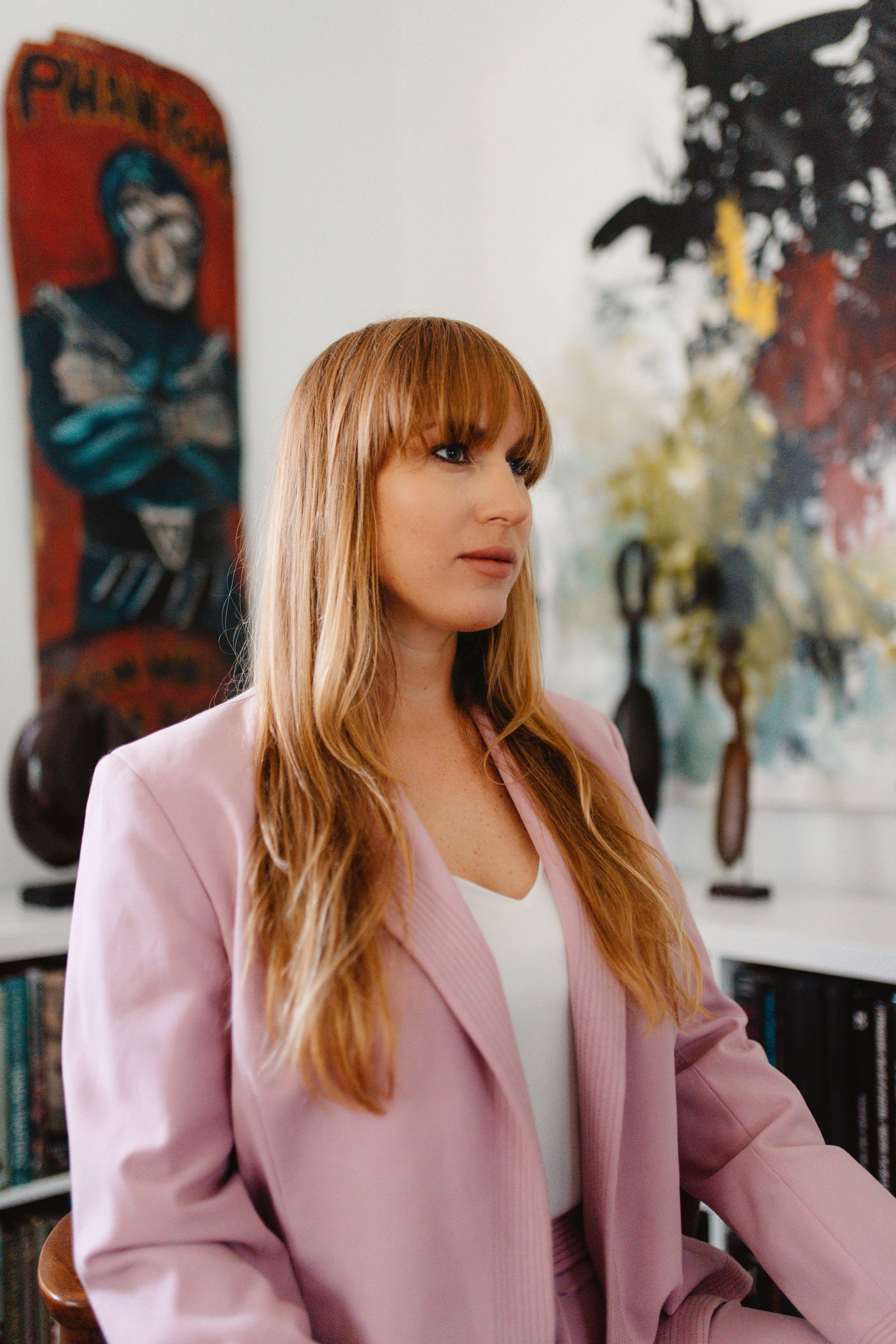
Special Interview with
Jessica L. Phillips
conducted by curator and art publicist Mia Raicevic
There’s not a lot of women-identifying people artwork is represented, and I feel like I was just out there selling tribal art let alone something as lucky to be exposed to this by (my partner) Billy, niche as Pop Tribal. These are spaces seen to be and now I’m able to bring beautiful artefacts into occupied by cis, predominantly men, and the my friends’ and clients’ homes. I’m happy when I public suffers access to this type of work pre- get to influence more women in the art world cisely because of the colonial gate-keeping pow- who may not have been exposed to this. It’s er structures that shape even how this work is really important that, as people standing outside presented. You being there, in that space, is it a of the immediate power structures of the art sign of change? world, we stick together because there aren’t
It's not a lonely world and there’s a lot of great women for example, stereotypically look to or female collectors prior to me dealing in major collect. There’s a lot of power and sacrifice collections that were understood, recognized, involved—beauty and a lot of extreme severity to and mixed with tribal art by these women, and in it, or as you could say, a darker past—and see, modern times. There is always an aesthetic that that sometimes glossed over because in our we all look for when looking through our own immediate culture it’s just not, in quotations, eyes as a collector, and for myself, I don't like to feminine. But there is also sculptural beauty and look at gender in any way from it, and I tend to elegance that the artists have captured in these feel very accepted and supported by the chang- items that is both impressive and awe inspiring. ing of the older guard that's seen as collecting I believe more women would collect tribal art this. To look at, for example, Maureen Zeramber if they had more knowledge of it. at the Tambaran Gallery in New York—she is and So, it is great to be able to be a female and has been a major influence in the Tribal Art world say to the others in the community ‘this is for decades. She’s always been a great mentor beautiful’, ‘this also is something you can collect’, and friend to me; and she told me when I started and ‘there is a major historical value to it’, independently as an art dealer that people will because living with tribal art gives you the tell you whatever you’re doing is wrong, but constant opportunity to travel to a different part you’re doing it right for you and it doesn't matter of the world, at a different time in history. what gender you are.
As much as it’s great to be a game-changer, I That's beautiful. think it’s important to not make it to be a reason many of us. It’s not something that a lot of behind the work. In the same way in that, I feel It’s definitely always been a boy’s club, but supported by this other generation because they because many types of tribal art have know that there needs to be a change in how the culturally been a boy’s club, the majority of this # 106
“I’m happy when I get to influence more women in the art world who may not have been exposed to this. It’s really important that, as people standing outside of the immediate power structures of the art world, we stick together because there aren’t many of us.” type of art was never supposed to be “seen” by Do you see yourself continuing to work within women! Many sacred objects were kept hidden Pop Tribal as part of your trajectory? and only brought out during male only ceremonies. Many idols and objects, along with the The term “Pop Tribal” was coined in 2007 in ceremonies that were preformed with these arte- an article featured on Artnet, which currently refacts, were never to be seen by women. presents the Phantom shields, which is just such
But here I am, living with it, celebrating it, and an anomaly and beauty. I am sure that there is admiring it. I also look at it in the way of being more art that falls into this category, and I look able to influence people in understanding other forward to discovering it. cultures and history—the good and the bad. And Although, I’ve had over a decade of expethere’s a lot of culture and history that isn't al- rience, I still see myself as young in the industry ways celebrated because it has a female base to and always learning. I believe in the long game it, for example looking at African spoons to beer and especially with tribal art, it’s about patience, pots, Naga jewelry (Nagaland), which were things and the longer you are in this industry the more that were possessed and created by women. that you know. I plan to be here for a long time
As an example, look at 19th century Native and I think it’s important to keep this part of hisAmerican indigenous artefacts such as clothing, tory exposed and celebrated for generations to baskets, and textiles—the women made these come. It takes the same type of dedication as war shirts—and every single part of its creation just about any type of art: paintings, pottery, represents something. Every part brings power, anything. I see us as gatekeepers of the art, and protection, or represents their livelihood and re- we have to keep that alive. I’ll always be in the presents their culture, history, and family and industry because I’m a collector first, and a deawho they are! And women are the ones that ler second. And that's also a difference in the make these beautiful pieces that men end up way I look at art, it’s not just for the sale, it’s collecting. So yes, there is a feminist aspect in because I love the art. collecting tribal art for me. # 107
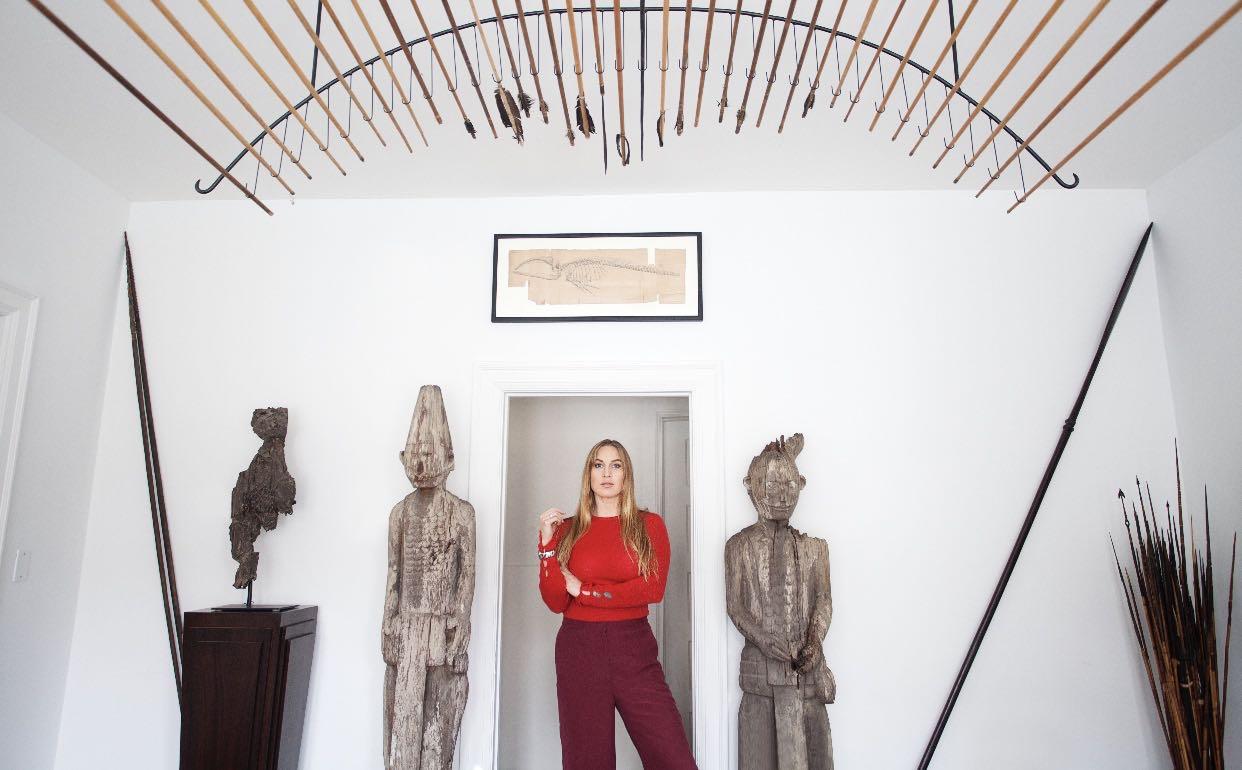
"We are caretakers, we take care of the art and we take care of the history and what it represents…”
That's great to hear. have collaborated with me to create this pu-
What can we expect to see from you in the “Man Who Cannot Die” which is on the phantom blication. We have over 70+ shields identified in
We are caretakers, we take care of the art and this book, so my second project and next exwe take care of the history and what it represents hibition will be on these shields. I’d like to faciso I'll always be in this—at what level, time will litate that, especially to collaborate with artists tell—but no matter, there is only gain in this in- from each culture involved in this history, and dustry, as I see it, if you keep learning, and I think artists represented this history to reclaim it, and I have that mentality that I always want to im- what better way than working with them to prove and there’s always something to learn. represent these historical pieces of art that have
near future? Okay, I have to ask you—as an art dealer, how
I love doing thematic exhibitions and I really stuff moving for you? What are some of the love to mix modern contemporary art with his- things that you’re dealing with? You know, torical tribal art to help bridge a gap in un- people don't get to ask art dealers these things derstanding and to create a dialogue on art and too often so it would be good for artists to know history, and so I have two in the works right now, what are you doing, to get around the effects of and one for the new book coming up called this? been celebrated and rejoiced for centuries. are you dealing with COVID? Be honest, how’s shields. It's the first book published on this area Well, I feel like I’m a bit of an enigma in this of pop tribal shields from Waghi valley, Papua because I’ve always worked in this sort of recluNew Guinea. I have a group of colleagues that sive and private way, and that’s something that # 108
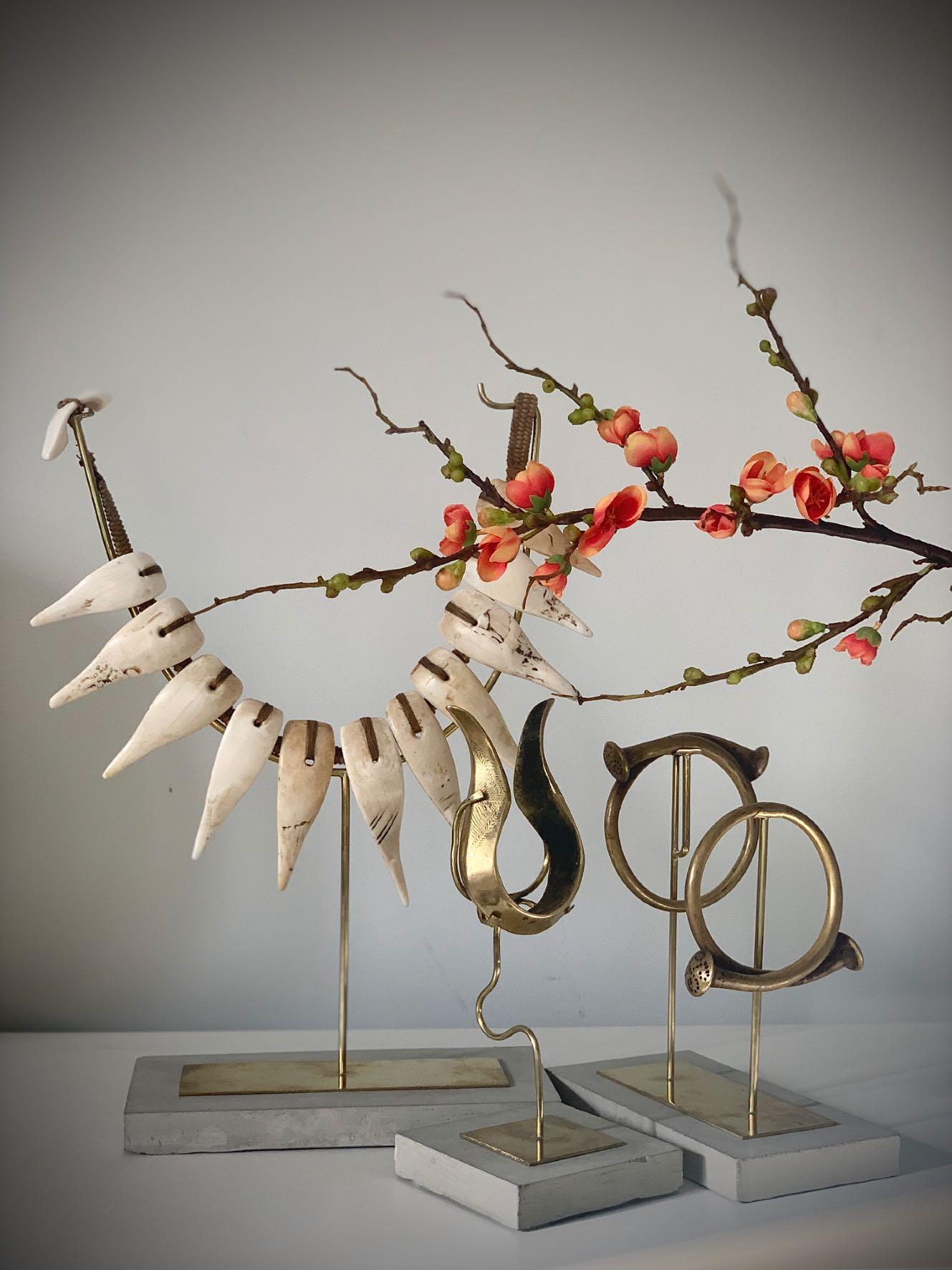
“Collectors will continue to collect as an investment; it’s about the tangible investment of looking at your money and having it in your home and celebrating it.” tribal art has influenced in me. I have worked Oh, yeah. it’s quiet. I don't think people want from home for over a decade, it takes discipline to flaunt money anymore; that's a thing of the to do it and balance is essential. Collecting also past. But collectors will continue to collect as an carries this secrecy, because people enjoy the investment; it’s about the tangible investment of privacy of owning these idolized figures and looking at your money and having it in your relics of the past. And this cloaking of secrecy home and celebrating it. They're pulling their doesn't stop, and collectors collect, especially money from the market and into a more soliwhen they’re spending more time at home. Not dified investment, which is art. being able to see art has been my major negative in this situation as a dealer, as well as And history…? travel. Many of my clients and business is international, and I miss going to the art fairs. I also Yes, and history. Really, what better way to do cataloging and collection management which spend your day? You sit and just stare and love, means I do understand what to do when you and then grab a book and learn about it, and want to sell it, and having that in place and orga- you’ll always find something new about tribal art. nized, relieves stress that this situation may cause You’ll always learn something else. And that's so people. Knowing you have a game plan pro- important. People are really starting to see how tecting your investment or loved pieces can bring important historical context is, especially in toa lot of peace to someone especially in these day’s age where we are trying to create change, times. I’m a lot busier with collections manage- and there’s actually a dialogue happening… ment and cataloging right now. more people are collecting. But they’re buying
Then selling work? art. Not stuff. Less stuff. # 109





